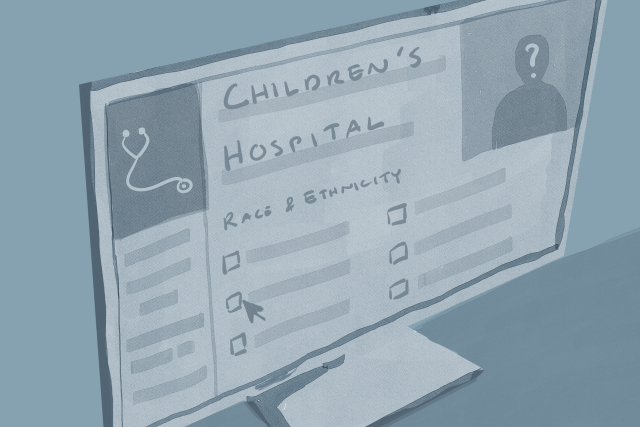[ad_1]
Race and ethnicity data in children’s electronic medical records may not be accurate, according to new research from the Michigan Child Health Equity Collaborative. The study, published on Sept. 3, looked at data from the three partner institutions in Mi-CHEC — C.S. Mott Children’s Hospital, the Children’s Hospital of Michigan and Corewell Health Helen Devos Children’s Hospital — and found error rates of 5% to 35% for data on ethnicity and 22% to 59% for race.
In an interview with The Michigan Daily, Dr. Gary Freed, lead author of the study and U-M professor, said this research is the first of its kind and has serious implications for other work on children’s health equity.
“In studies of children, no one had ever bothered to look to see how accurate the medical record is,” Freed said. “If there is significant error, it calls into question every previous study that’s ever been done that has found disparities or inequities and raises the question of whether or not those disparities actually exist as described, or whether or not we’re missing some disparities and inequities that actually exist.”
Freed said he believes there is a sense of reluctance to examine flaws in EMR data because the medical field is so reliant on their accuracy.
“It’s not just here in the state of Michigan, but no one’s looked anywhere,” Freed said. “And it’s because everyone wants to believe it’s accurate because it’s too hard to think about what to do if it’s not.”
Researchers measured the accuracy of the EMR data by comparing it directly to race and ethnicity designations provided by parents. Dr. Susan Woolford, study co-author and associate professor of pediatrics at the Medical School, said children’s EMRs may be particularly error-prone because of variation in who is entering the data.
“For children, we have the added layer of not knowing exactly who is reporting the child’s race and ethnicity,” Woolford said. “So it could be that the parents are the ones saying it, either of their parents. It could be that, if they’re adolescents, it might be the child who’s indicating themselves. Or we wonder if, in some cases, (employees) just sort of guess and enter the race or ethnicity that they think because sometimes it’s quite an uncomfortable question … so we wonder if that might be contributing to the inaccuracies in the data.”
According to Freed, another factor that may contribute to high error rates is the wide array of options available for race and ethnicity designations in some health care systems.
“Some hospitals and health systems have made efforts to be more inclusive, so they increase the number of options for people to be able to select, which is a lovely idea in terms of inclusivity, but the more options increases the error rate because there’s more potential for mismatch,” Freed said. “And indeed, we found those hospitals that had more choices had more error. … One hospital, I believe, allowed 47 different choices for race. That’s a lot.”
Freed recommended that, moving forward, health care systems should avoid offering a large number of options for race and ethnicity. He also said some previous work on children’s health equity may need to be reevaluated in light of the errors uncovered by this study.
“I know this won’t make me very popular with people who’ve published many of these studies, but I think many of them, especially those that found marginal differences, it’d be a really good idea to go back and repeat them, knowing what the error rate is of racial and ethnic attribution in their health system,” Freed said. “For example, if someone found a 10% disparity, but they have a 20% error rate, that should raise some eyebrows.”
Brittany Bogan, co-author of the study and Mott administrative director of safety and quality, said the research findings will help the hospitals involved improve their procedures for collecting data about race and ethnicity.
“We are continuously working to correct any errors that have been identified,” Bogan said. “It also helps us to be more thoughtful when we collect it from the beginning.”
According to Bogan, the collaborative nature of Mi-CHEC means each of the three partner institutions can make changes more efficiently.
“Working together allows us to move that much faster and drive improvement that much faster,” Bogan said. “What are we all learning from one another? What’s happening at another children’s hospital in the state, if they’re willing to share with us. It’s one less thing we have to recreate, right? We’re all learning together, and that expedites the process.”
Having accurate race and ethnicity data is crucial to performing studies on health disparities, according to Bogan. She explained that conducting this research is a key component of advancement in the health care setting.
“If care isn’t equitable, we’re not able to strive towards the highest quality, safest care,” Bogan said. “Equity is a key component of any work that we do and care that we provide, and so we try to put an equity lens on all of our improvement initiatives. So being able to do this work in tandem with quality improvement, it makes sense. It’s fundamental and foundational to our quality improvement efforts.”
Daily News Editor Nadia Taeckens can be reached at taeckens@umich.edu.
Related articles
[ad_2]
Source link











